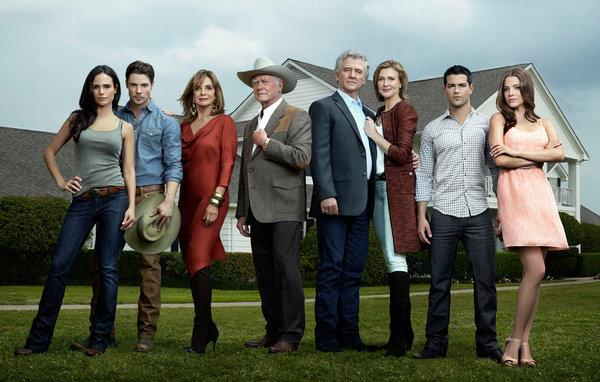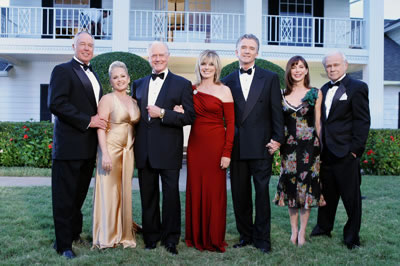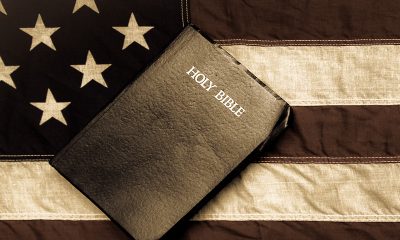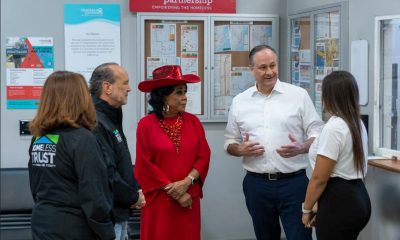Arts & Entertainment
‘Dallas’ reboot in fine form
Continuation of classic series deftly balances old and new
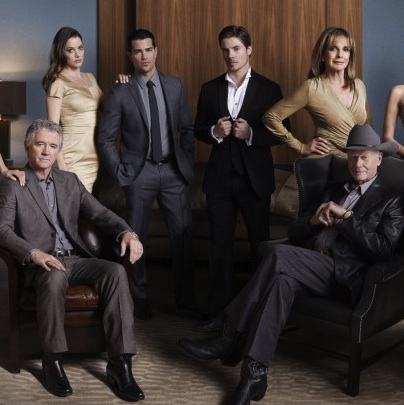
I finally caught the “Dallas” reboot (Wednesdays at 9 on TNT) last night on DVR — busy week — and though thoroughly prepped for disappointment, was delighted to find a tightly paced, deftly edited take on one of my all-time favorite shows that struck a perfect balance between edgy/hip/new and familiar/nostalgic/endearing.
Which is saying a hell of a lot — classic franchise reboots are notoriously hard to pull off. They always sound good on paper but when a show takes on a life of its own and becomes a cultural touchstone, as the ’78-’91 classic installment did, it’s practically impossible to catch lightening in a bottle twice. Who knows if it will last, but this week’s two-hour pilot did everything it needed to do to relaunch the series in a gripping, promising way. It’s light years better than “J.R. Returns” (1996) and “War of the Ewings” (1998), the two TV movies that continued the storyline and thankfully removed the bitter aftertaste left by the show’s bizarre 1991 finale (“Conundrum”) in which Joel Gray appeared in an “It’s a Wonderful Life” takeoff that ended with a shoddily ill-conceived cliffhanger with supernatural overtones.
So it’s thrilling to see the old warhorse, which struggled mightily in both quality and ratings its last few seasons, doing well — 6.9 million viewers tuned in to this week’s launch making it the most-watched scripted cable series so far this year and outranking anything the regular networks had in its time slot.
Twin heartthrobs Josh Henderson and Jesse Metcalfe play Ewing offspring John Ross (J.R. and Sue Ellen’s son) and Christopher (Bobby and Pam’s son) all grown up. One can’t help but wonder, of course, what became of Ormi Katz and Joshua Harris, the two actors who played the characters for years as kids on the original show, but their absence is quickly forgotten as Henderson and Metcalfe are so easy on the eyes and good actors too.
John Ross wants to drill for oil on Southfork Ranch against the wishes of Miss Ellie’s will. Christopher is pursuing an alternative energy venture that has had devastating consequences in Asia. He’s about to get married at the ranch to Rebecca (Julie Gonzalo). His old flame Elena (Jordana Brewster) is now dating John Ross. It’s a clever premise reviving a theme from the original series — early in the show, one of JR.’s deals left the family in a precarious spot financially and Miss Ellie had reluctantly agreed to let them drill on the ranch, something she’d never wanted to do. At the 11th hour, they didn’t have to.
The older generation is still kicking, though barely in some cases. Bobby (Patrick Duffy) is battling a cancer diagnosis (he’s married now to a third wife, Ann, played by Brenda Strong) and J.R. is in a nursing home suffering from depression. Sue Ellen (Linda Gray) is also in the cast. Cliff Barnes (Ken Kercheval) will be in future episodes. Ray Krebbs (Steve Kanaly) and Lucy Ewing (Charlene Tilton) are sadly reduced to cameos. Let’s hope if the show is a hit, they’re invited back and fleshed out. Tilton, especially, is a fan favorite from years ago. I never had Lucy’s hair but I did appreciate her taste in men — from gay Kit Mainwaring to her hunky doctor husband Mitch (Leigh McCloskey).
“Dallas” 2012 works for several key reasons — one, it’s been long enough now since the original show ended, that it feels fun, not tired, to revisit these characters. Nobody can say how long has to pass for such things to make sense, but pop culture very much unofficially dictates there has to be significant time — decades — before such ideas can float. “J.R. Returns” and “War of the Ewings,” while fun to watch, felt like everyone was beating a dead horse, and few horses were more dead than “Dallas” in its last couple regular seasons when most of the original cast had either long defected or were reduced to glorified cameos or mentions. The reboot, however, manages to revive the long-dormant excitement the show lacked in its final years by casting charismatic young actors in the key roles — Henderson and Brewster especially stand out — but having enough of the original cast around to keep it all grounded in authenticity. Using the original Texas-based exteriors, where several reunions have taken place over the years, is as key as the presence of Hagman, Duffy and Gray.
Sadly, but unsurprisingly, Victoria Principal (whose Pam was the original series’ central character in its early years) is a no show. She hasn’t fully shunned the show that made her famous — she showed up for a classic Vanity Fair photo shoot in the mid-’90s and for the 2004 “Return to Southfork” reunion (which featured cast members in a non-scripted format appearing as themselves), but has eschewed any thoughts of reviving her role. She told Ultimate Dallas (ultimatedallas.com, the amazingly thorough fan site) a few years ago the notion seemed rather absurd this many years later. Even so, she was never as chummy with the rest of the cast (Hagman, Duffy and Gray are close friends in real life and gathered regularly even before the show relaunched).
If Principal seems only vaguely interested — Duffy told TV Guide last week they talked by phone recently and she wished him the best on the new show — she’s still more involved than the late Barbara Bel Geddes (Miss Ellie) was in her final years. Not only did she sit out the last season (having left once before but come back), she was a no-show for both the TV movies, the Vanity Fair photo shoot and the 2004 reunion (she may have been ill for the latter — she died of cancer in 2005). She wasn’t, however, entirely reclusive in her later years — she did memorable commentary for a “Vertigo” restoration (she played Midge in the ’58 Hitchcock classic) in ’96. It’s a shame. She and Howard Keel (whose Clayton Farlow was a staple for 10 seasons), now both dead, would have been great additions to the Vanity Fair gathering. People always remember Jock (the late Jim Davis), but Clayton was on the show far longer.
The key to the new show’s success will be the degree to which it manages to maintain this delicate balancing act of old and new. Focus too much on J.R., Sue Ellen and Bobby and it looks like a Motown revival tour. But conversely, if the younger cast gets all the air time, there’s no anchor to the past. The scenes in which the two generations interacted were the best on Wednesday’s premiere — Hagman, who at age 80 has lost none of the lip-smaking relish he brought to what should have been an Emmy-winning role, plays especially well with Henderson, whose John Ross is presented as a manipulative chip off the old block.
A short scene by the Southfork pool with Henderson and Gray was the debut’s best. As Sue Ellen offered her son her support in the never-ending battle over the land (a recurring theme in the original series), Gray’s delivery crackled with tension. She looks amazing. Her icy glares shoot the same daggers they did all those years on the original series.
There were a few shoddy elements — the soundstages that are supposed to be the Southfork interiors lack both the floorplan and dimensions of those of the old show (which themselves did not match the interiors or layout of the real Southfork ranch where the exteriors have always been filmed) — but where it really counts, the new “Dallas” works. Even the opening credits, featuring a savvy twist on the original montage and a deliciously effective re-orchestration of the show’s majestic theme music, work.
It’s off to as solid a start as could possibly be expected.
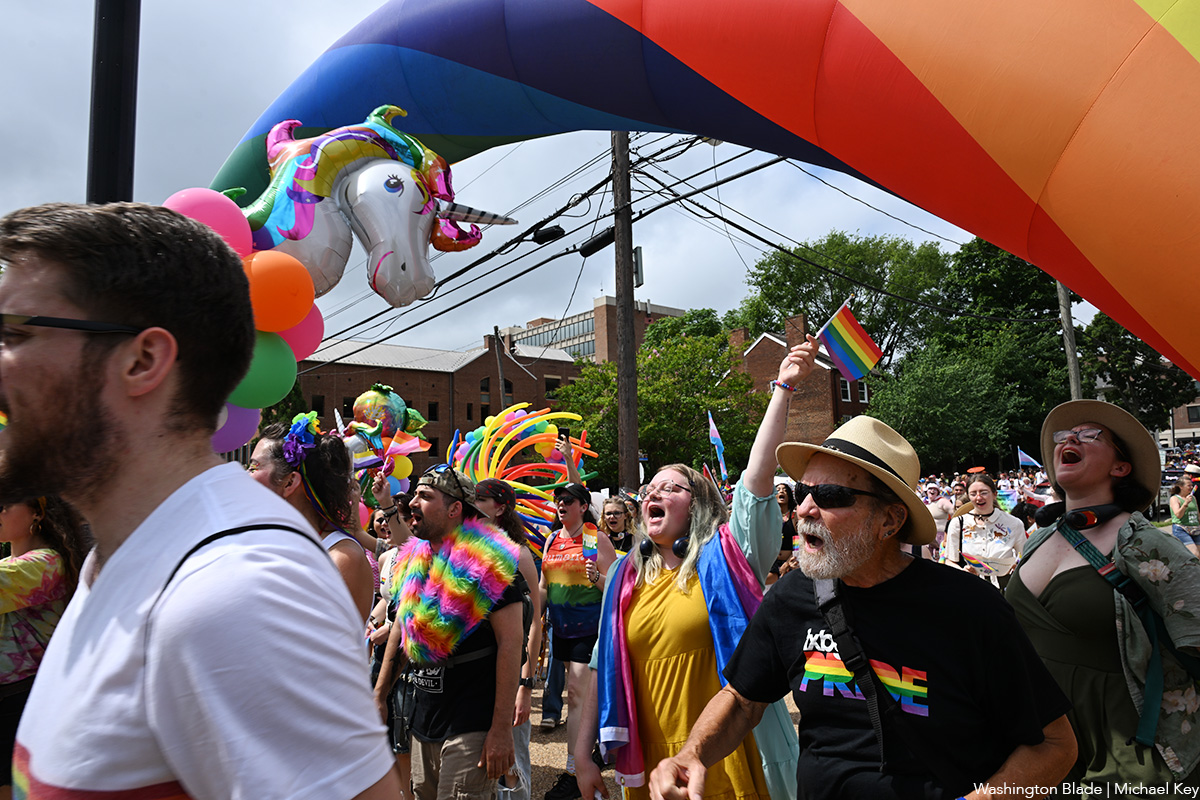
The fifth annual Fredericksburg Pride march and festival was held on Saturday, June 28. A march through the streets of downtown Fredericksburg, Va. was followed by a festival at Riverfront Park.
(Washington Blade photos by Michael Key)
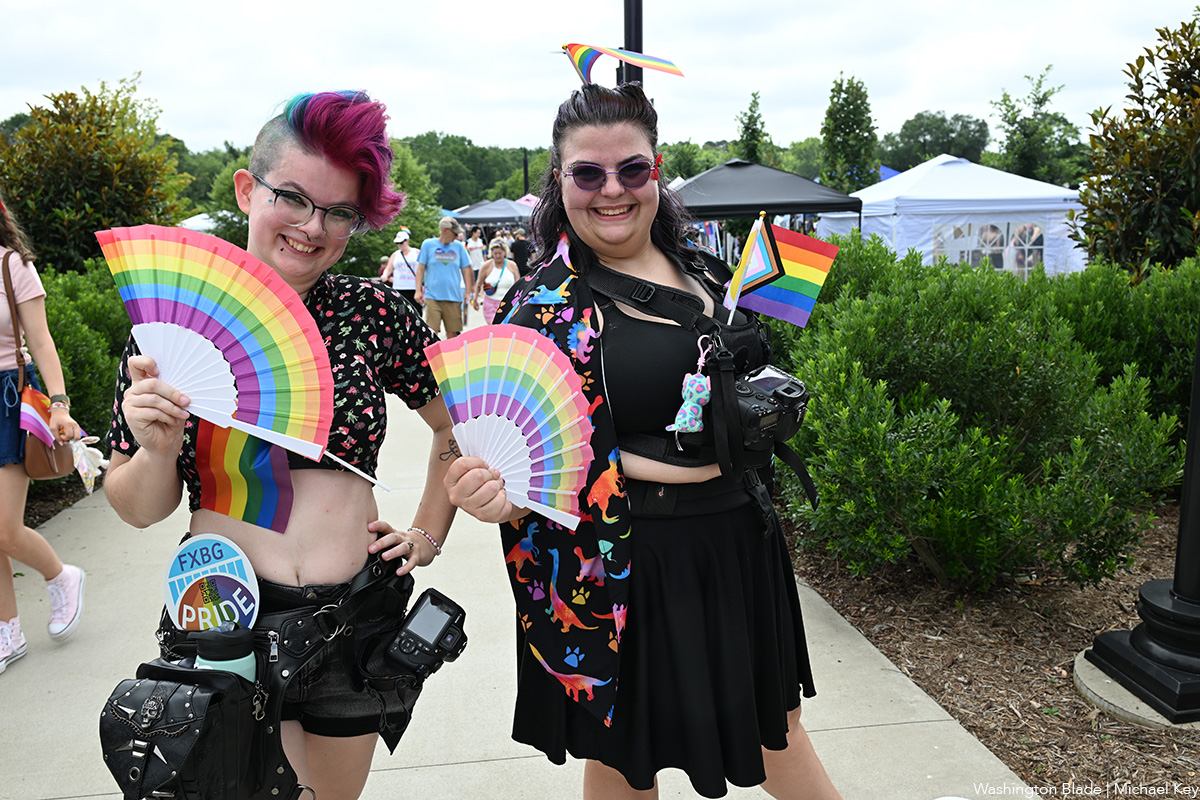
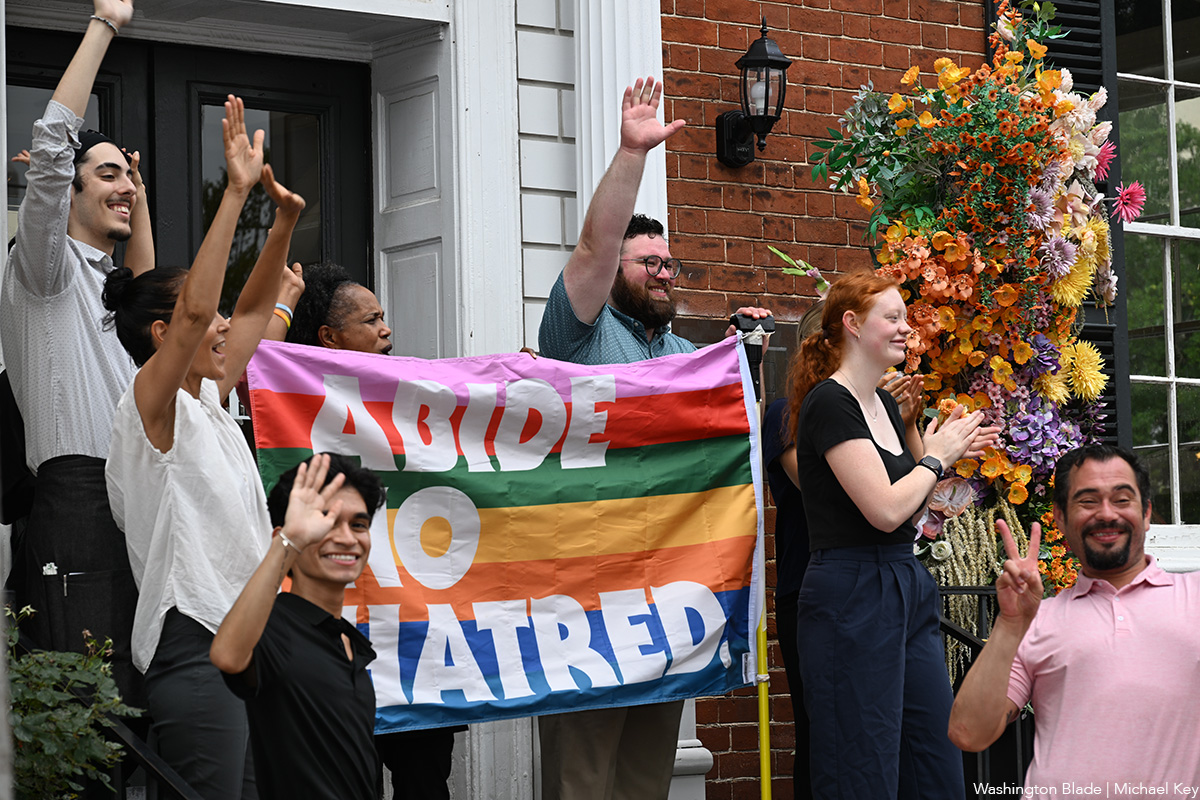
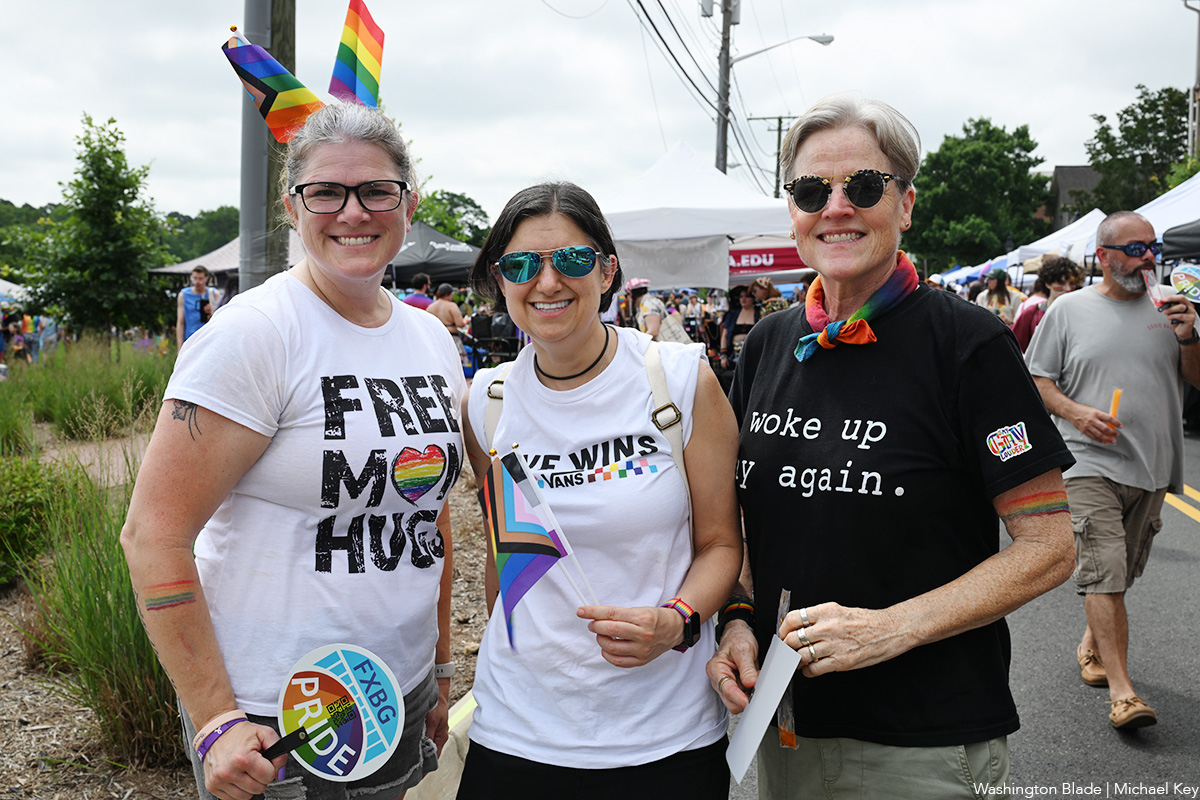
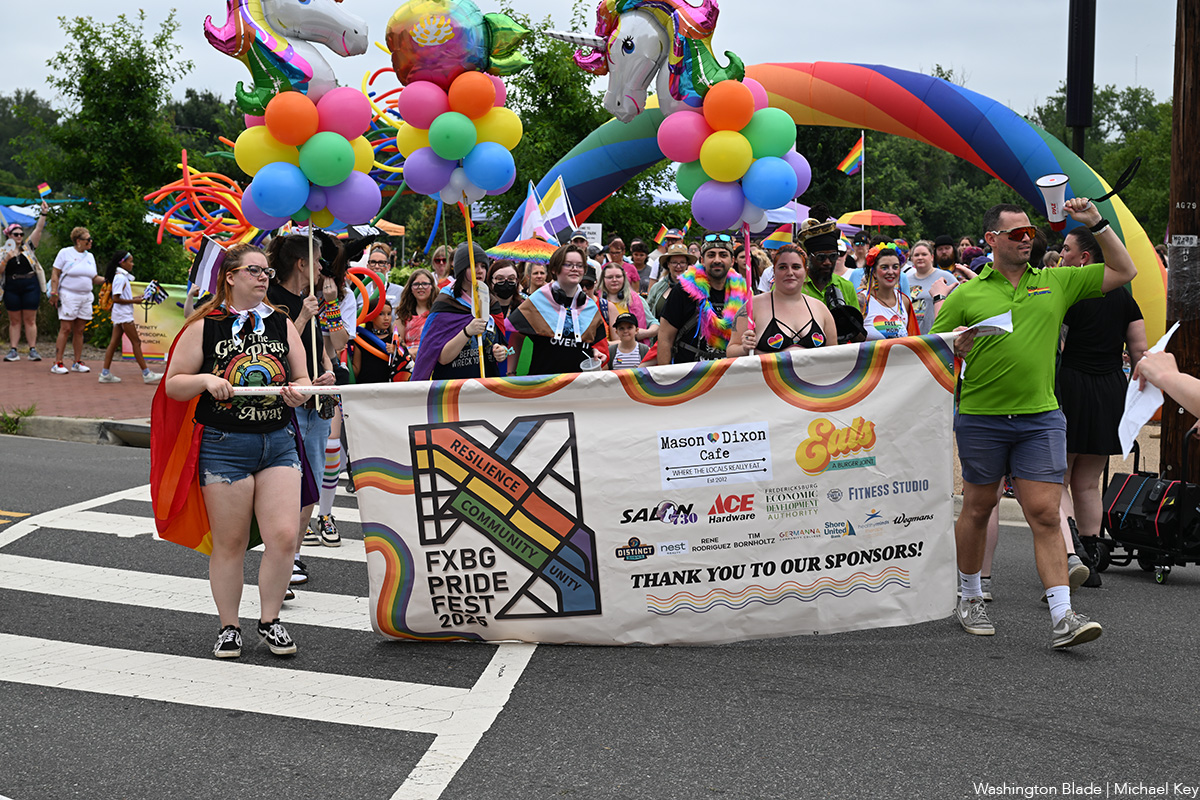
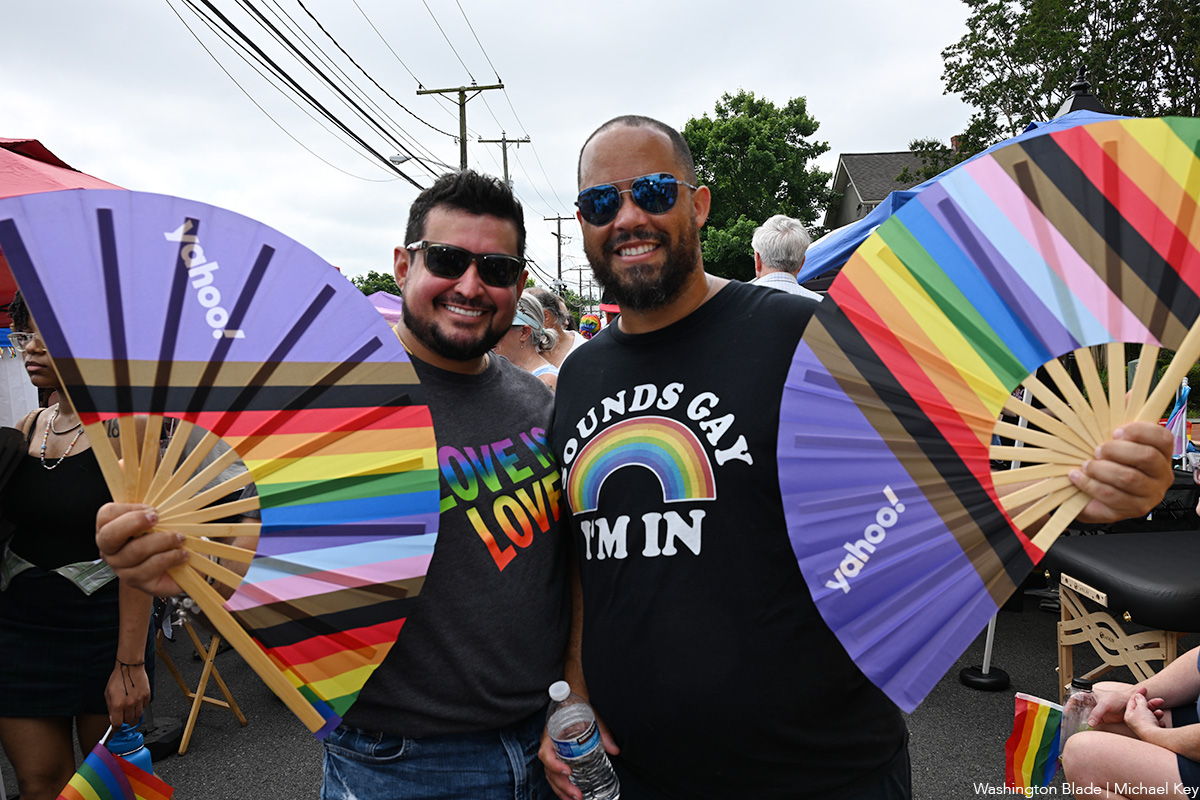
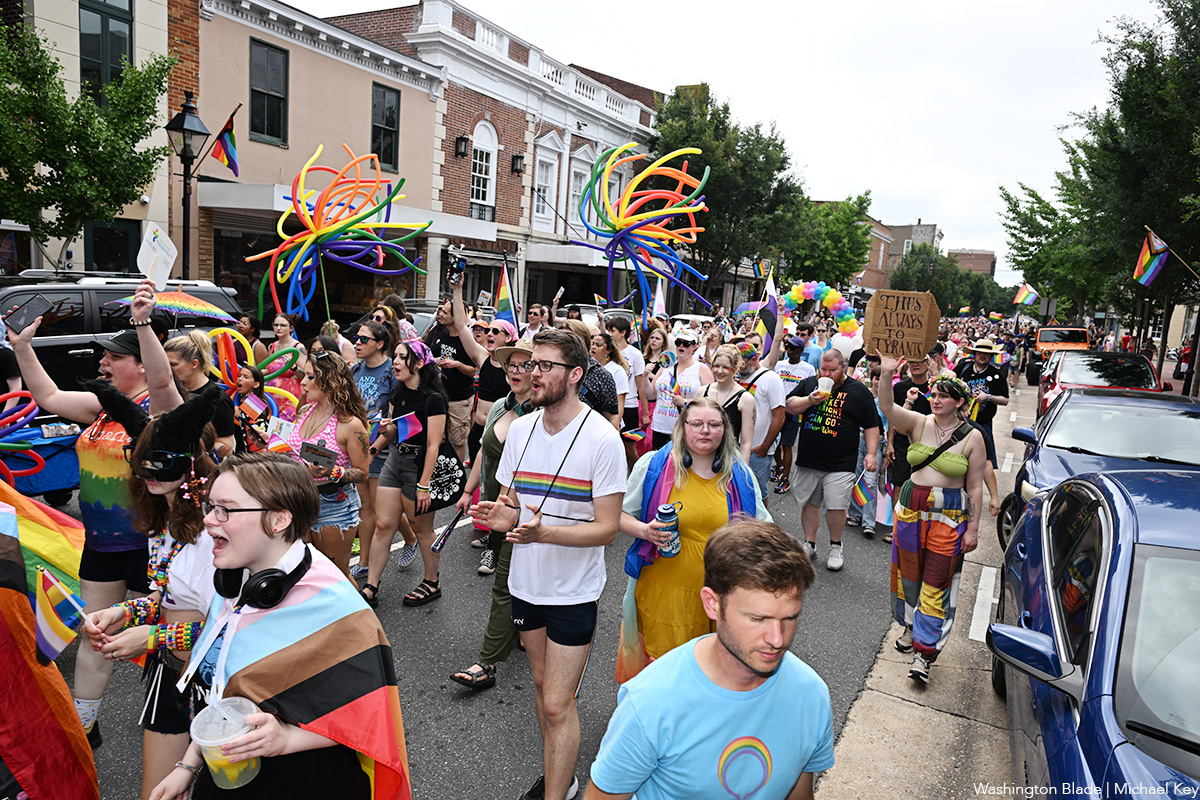
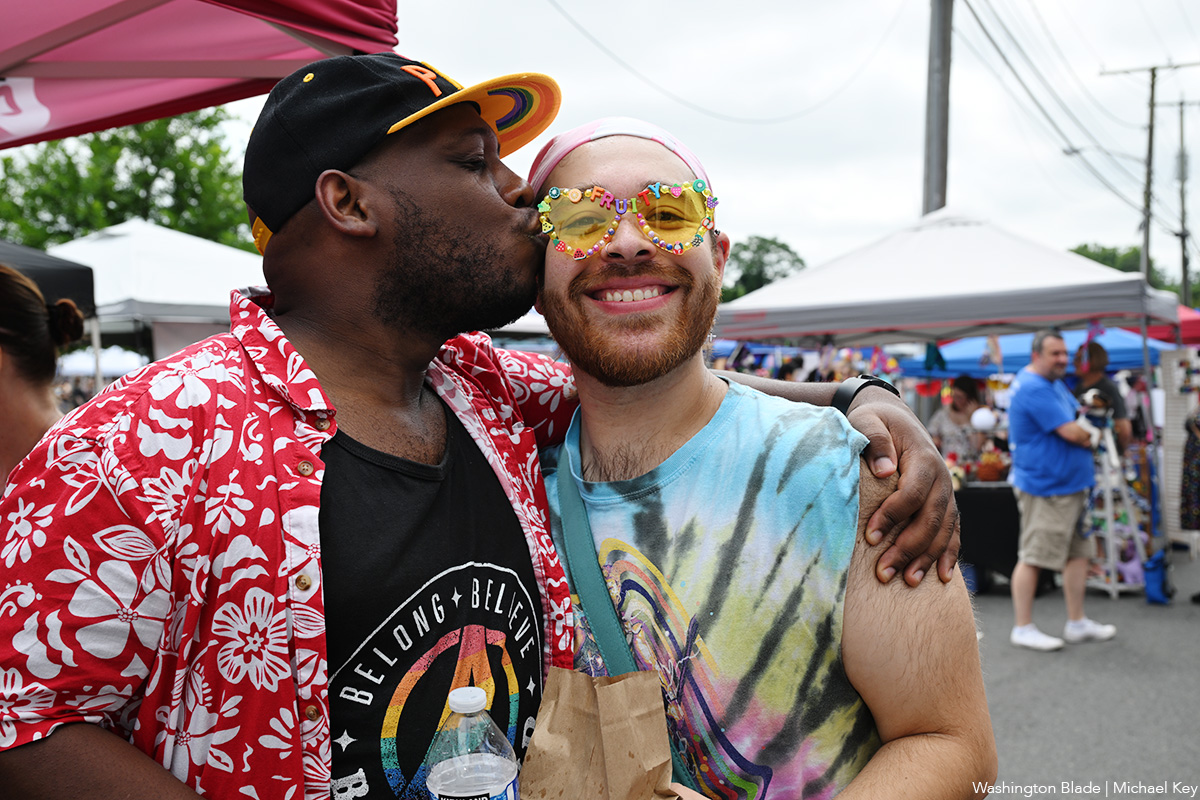
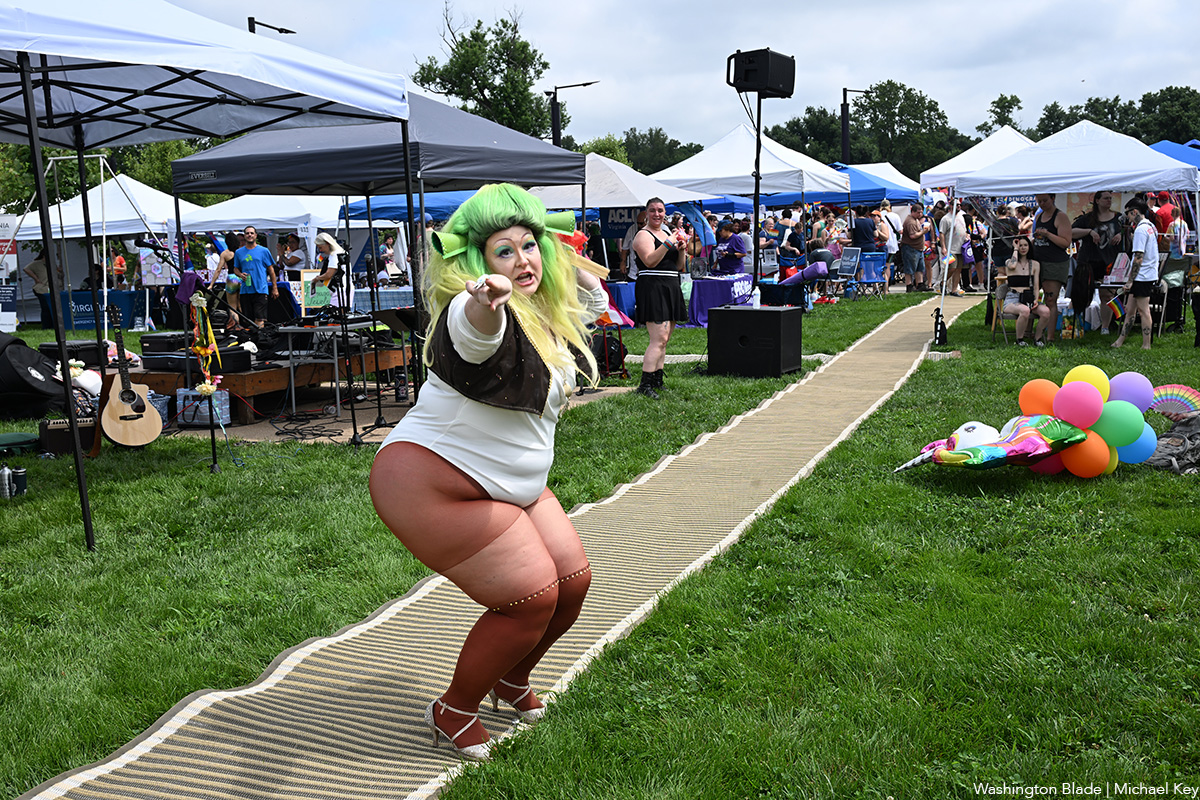
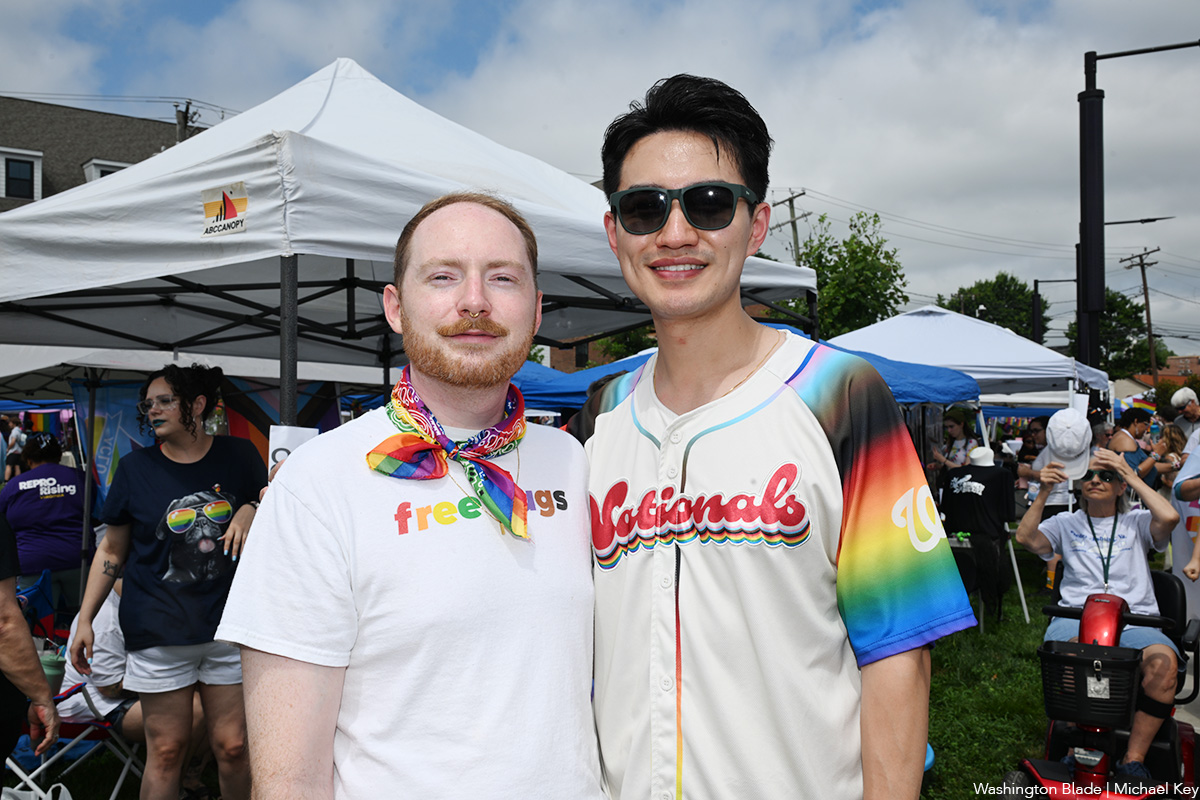

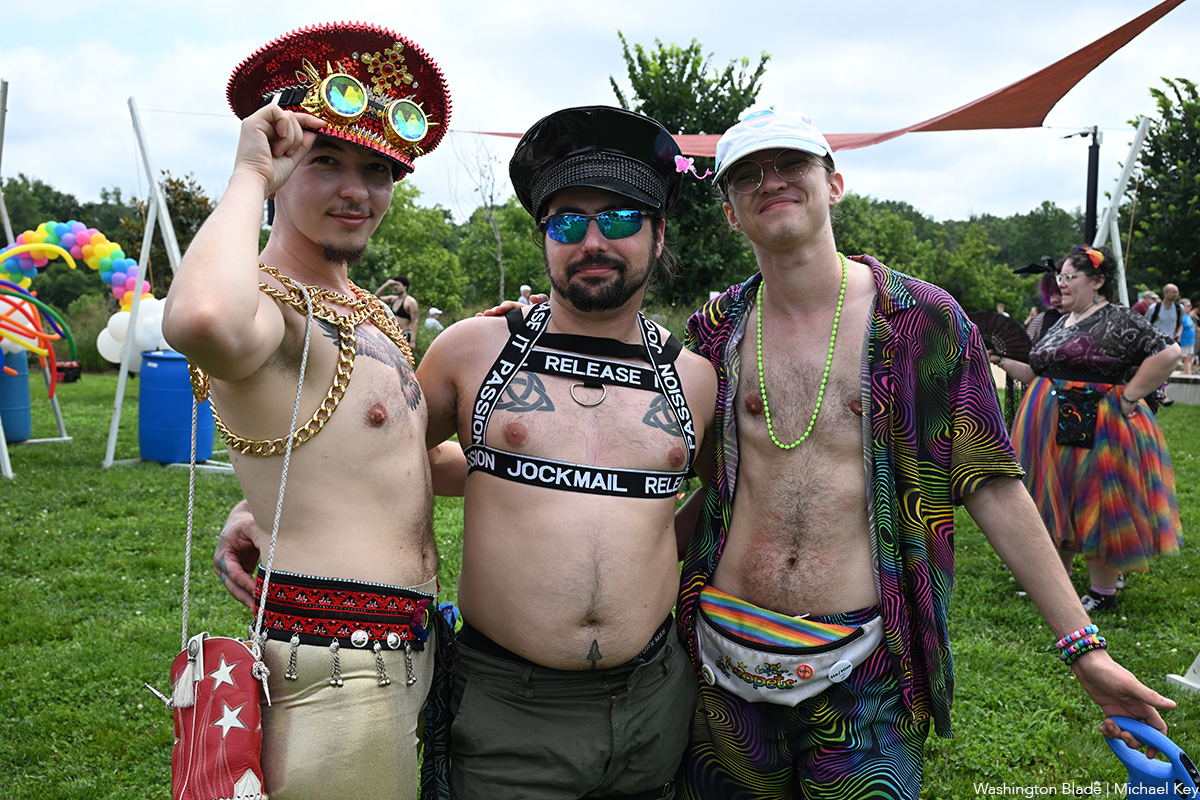
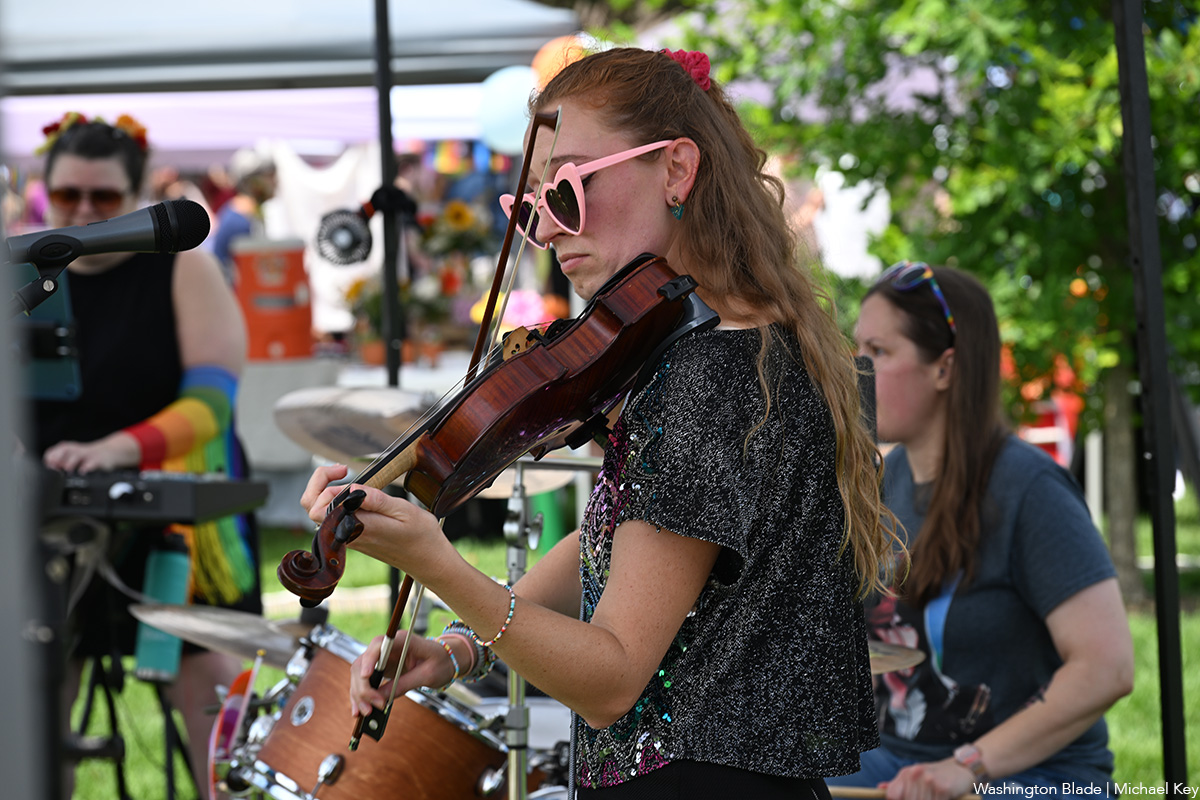
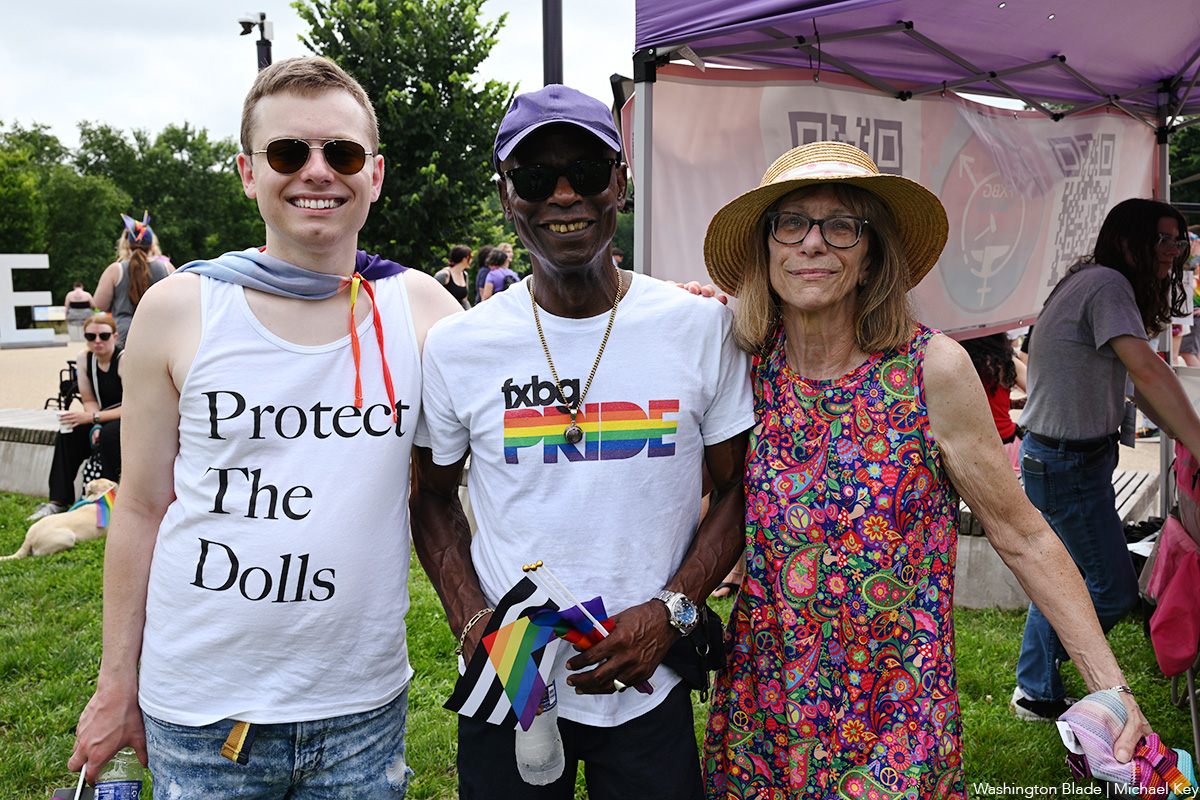
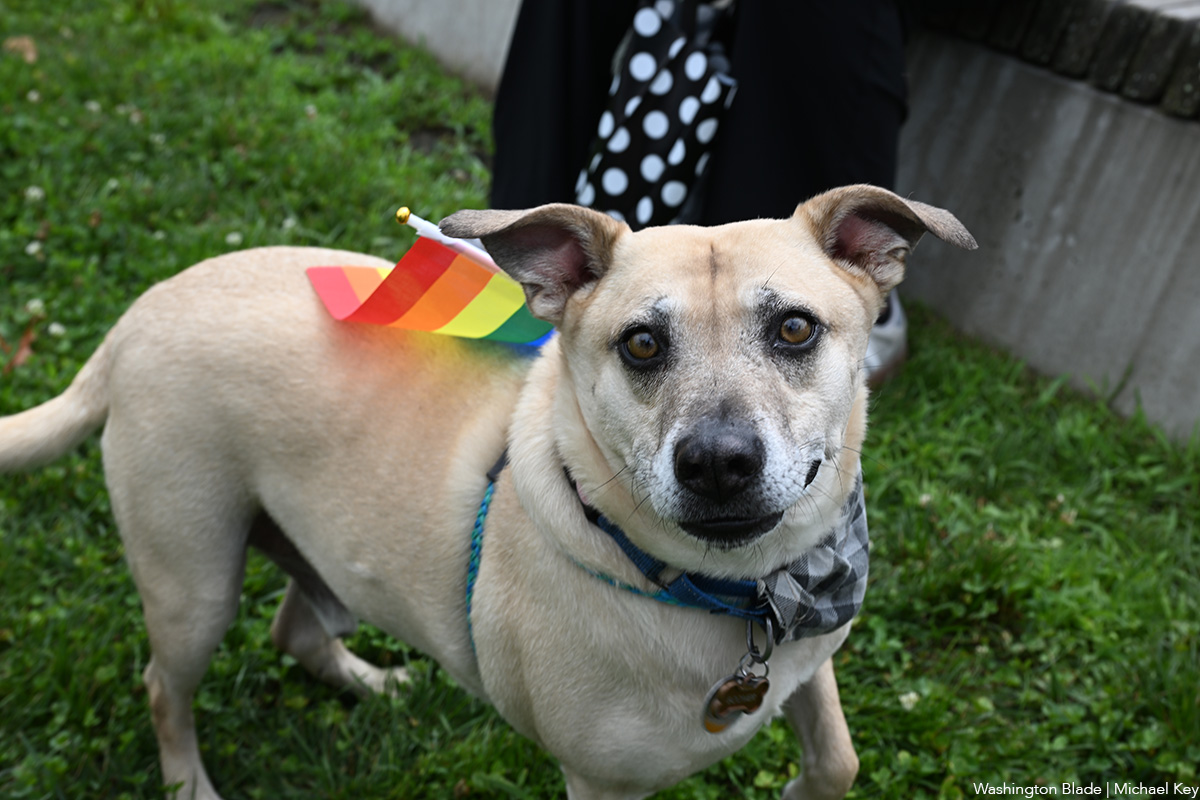
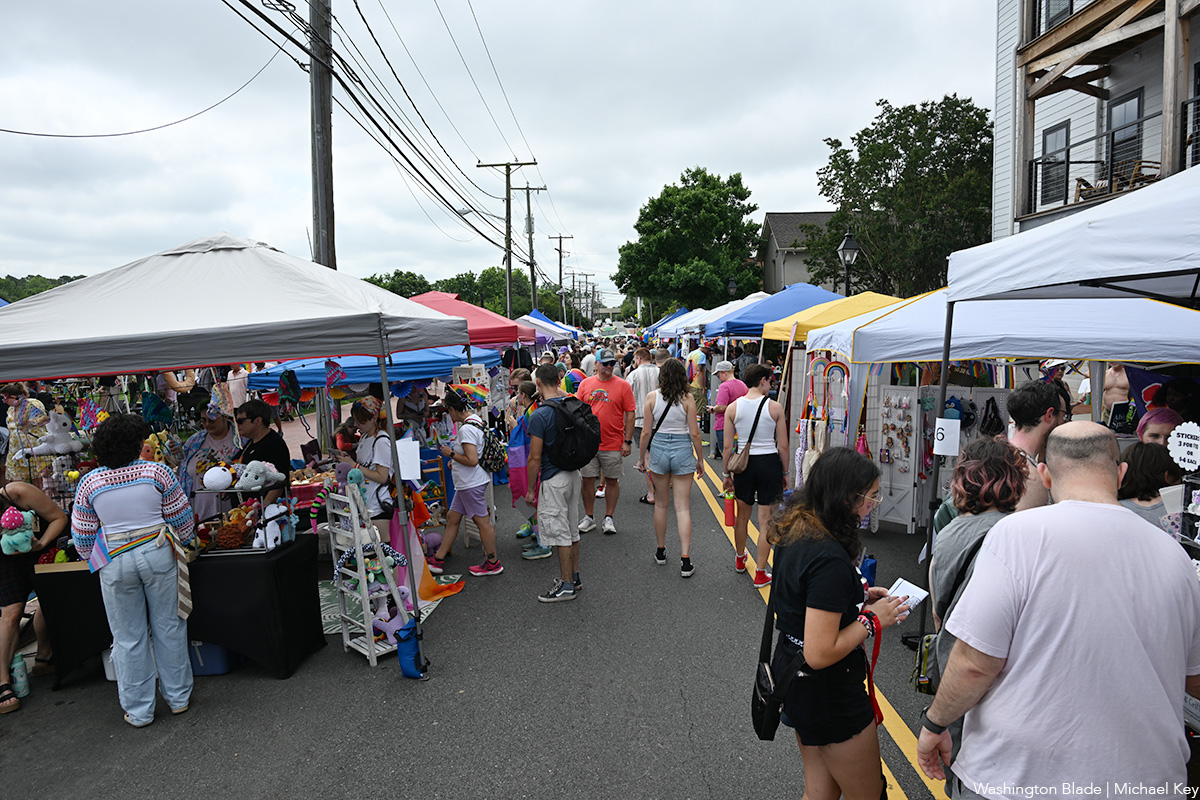
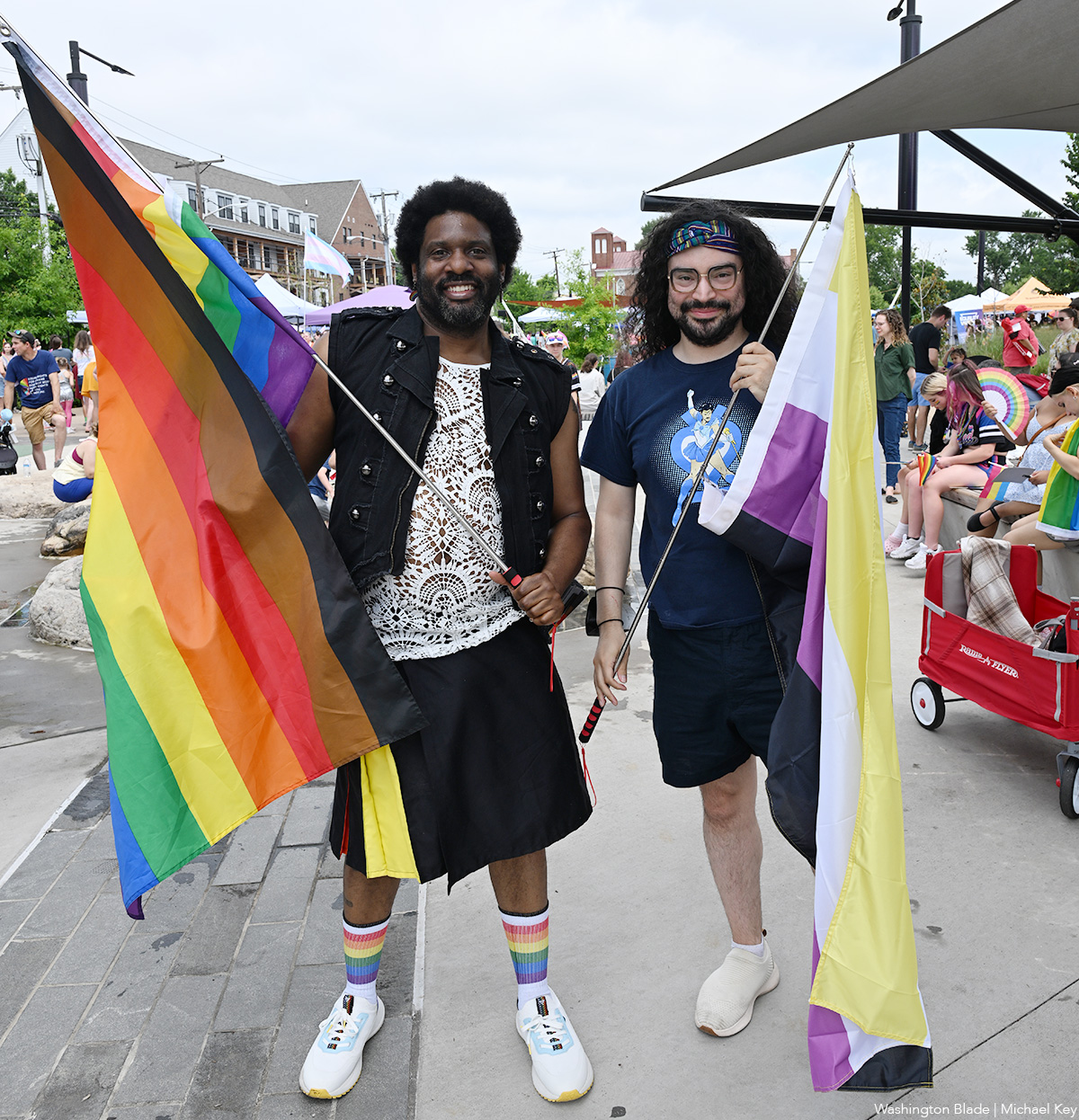
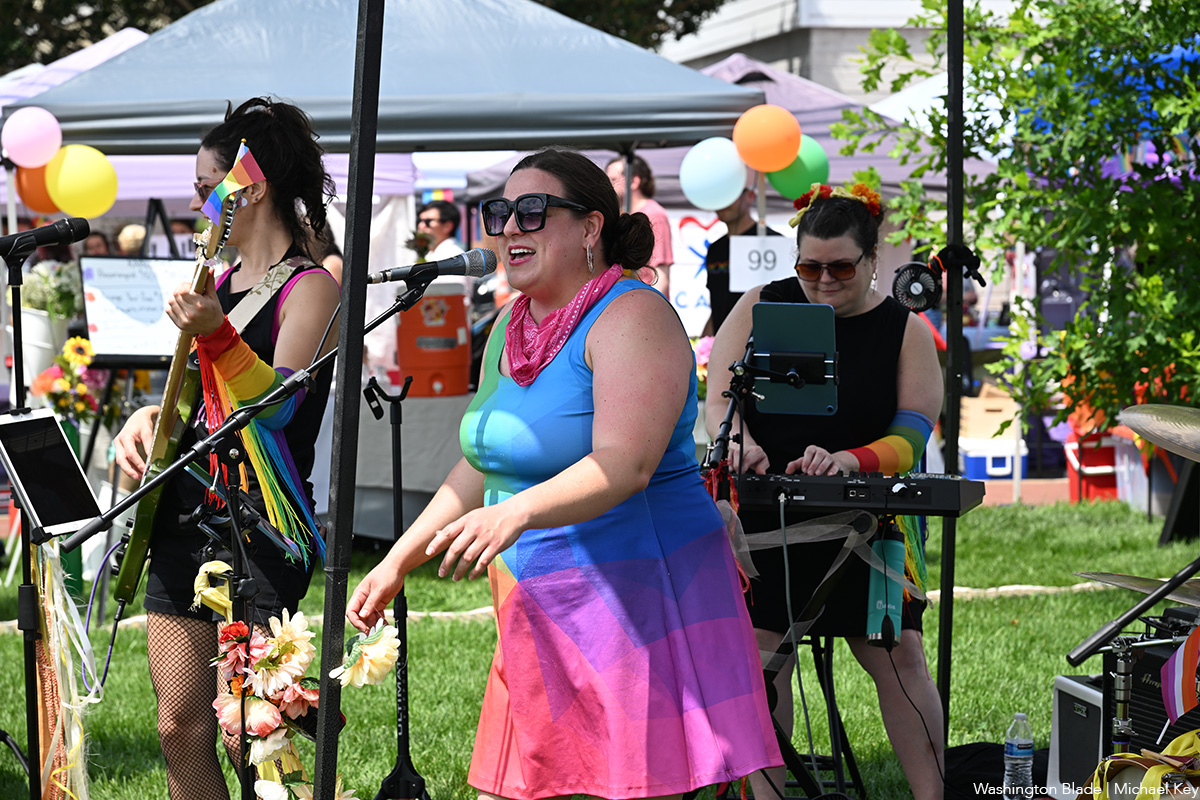
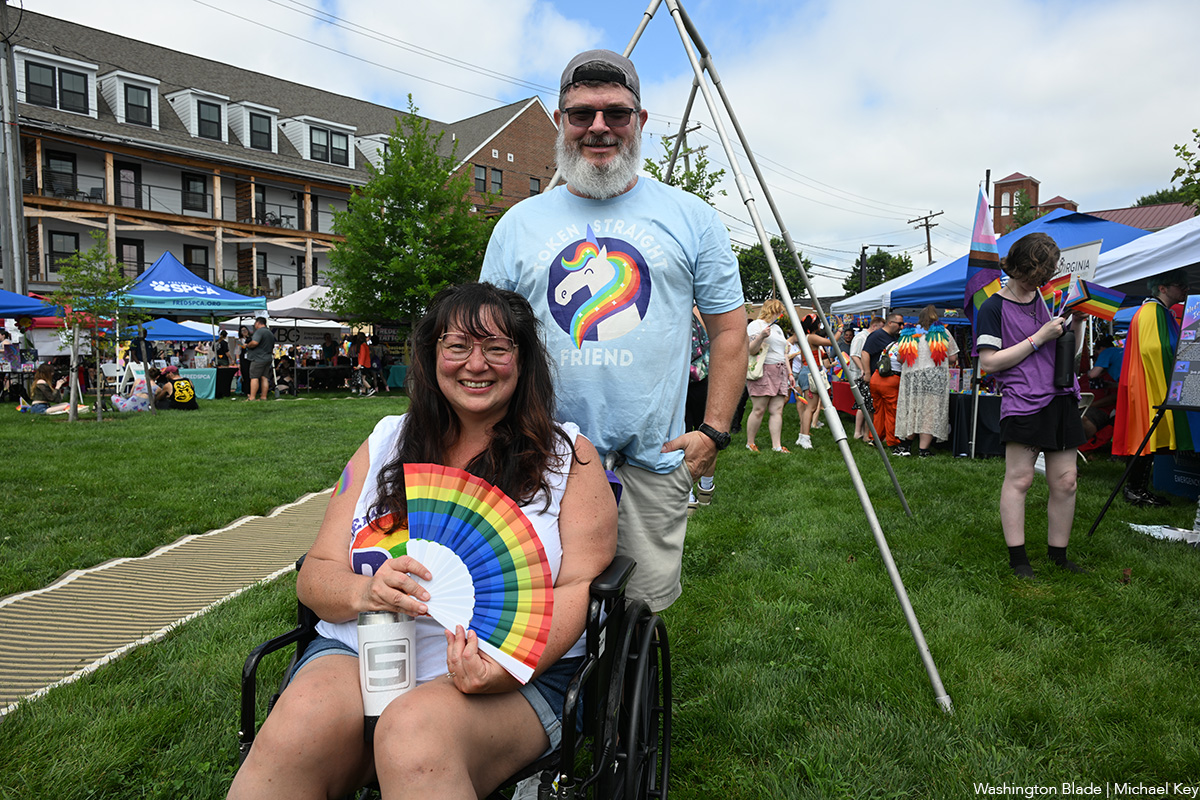
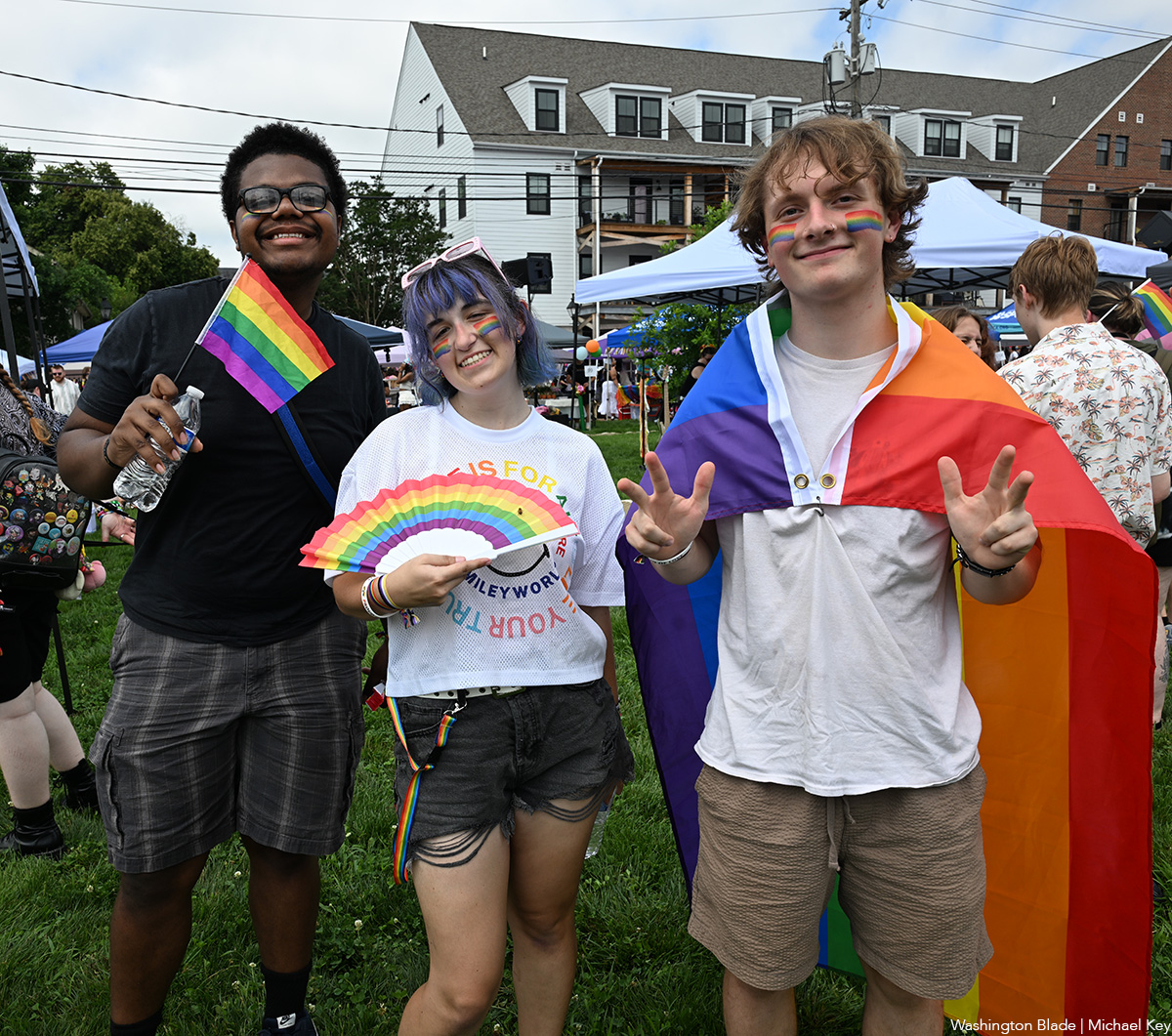
India
Anaya Bangar challenges ban on trans women in female cricket teams
Former Indian cricketer Sanjay Bangar’s daughter has received support
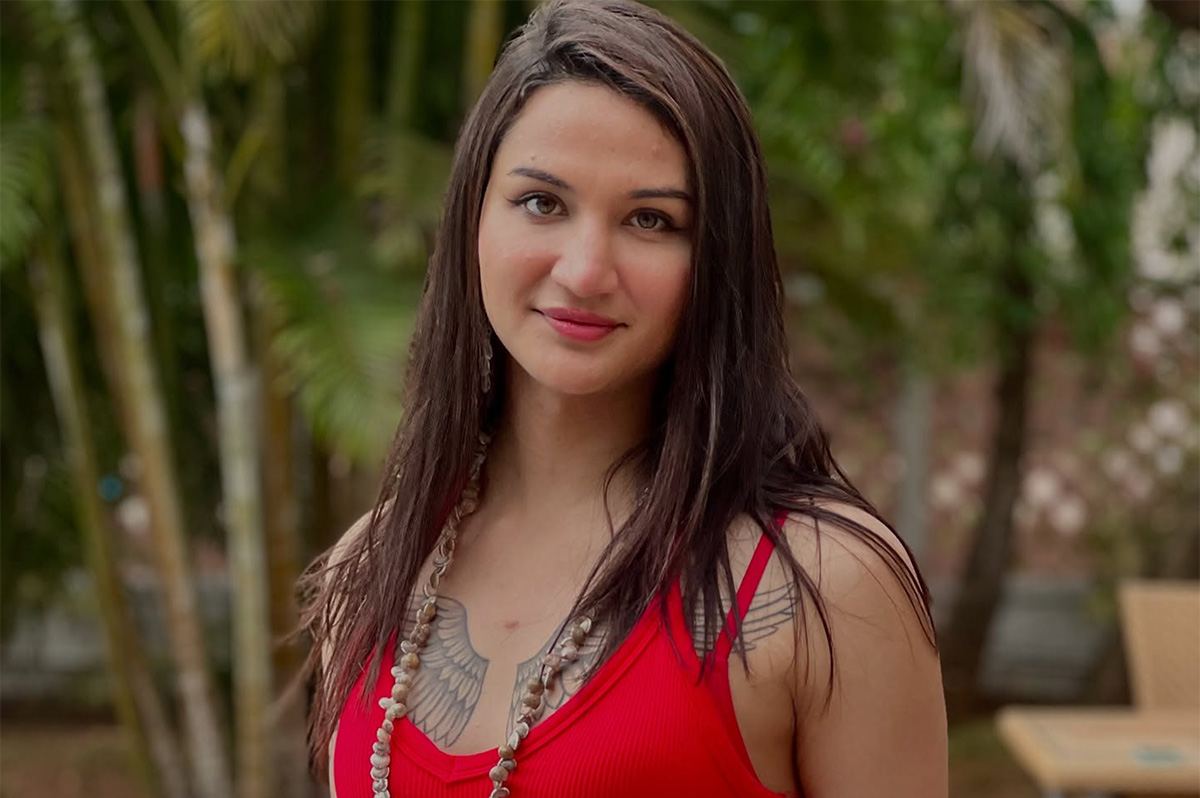
Anaya Bangar, the daughter of former Indian cricketer Sanjay Bangar, has partnered with the Manchester Metropolitan University Institute of Sport in the U.K. to assess her physiological profile following her gender-affirming surgery and undergoing hormone replacement therapy.
From January to March 2025, the 23-year-old underwent an eight-week research project that measured her glucose levels, oxygen uptake, muscle mass, strength, and endurance after extensive training.
The results, shared via Instagram, revealed her metrics align with those of cisgender female athletes, positioning her as eligible for women’s cricket under current scientific standards. Bangar’s findings challenge the International Cricket Council’s 2023 ban on transgender athletes in women’s cricket, prompting her to call for a science-based dialogue with the Board of Control for Cricket in India and the ICC to reform policies for transgender inclusion.
“I am talking with scientific evidence in my hand,” Bangar said in an interview posted to her Instagram page. “So, I hope, this makes an impact and I will be hoping to BCCI and ICC talking with me and discussing this further.”
On Nov. 21, 2023, the ICC enacted a controversial policy barring trans women from international women’s cricket. Finalized after a board meeting in Ahmedabad, India, the regulation prohibits any trans player who has experienced male puberty from competing, irrespective of gender-affirming surgery or hormone therapy. Developed through a 9-month consultation led by the ICC’s Medical Advisory Committee, the rule aims to safeguard the “integrity, safety, and fairness” of women’s cricket but has drawn criticism for excluding athletes like Canada’s Danielle McGahey, the first trans woman to play internationally. The policy, which allows domestic boards to set their own rules, is slated for review by November 2025.
Bangar shared a document on social media verifying her participation in a physiological study at the Manchester Metropolitan University Institute of Sport, conducted from Jan. 20 to March 3, 2025, focused on cricket performance. The report confirmed that her vital metrics — including haemoglobin, blood glucose, peak power, and mean power — aligned with those of cisgender female athletes. Initially, her fasting blood glucose measured 6.1 mmol/L, slightly above the typical non-diabetic range of 4.0–5.9 mmol/L, but subsequent tests showed it normalized, reinforcing the study’s findings that her physical profile meets female athletic standards.
“I am submitting this to the BCCI and ICC, with full transparency and hope,” said Bangar. “My only intention is to start a conversation based on facts not fear. To build space, not divide it.”
In a letter to the BCCI and the ICC, Bangar emphasized her test results from the Manchester Metropolitan University study. She explained that the research aimed to assess how hormone therapy had influenced her strength, stamina, haemoglobin, glucose levels, and overall performance, benchmarked directly against cisgender female athletic standards.
Bangar’s letter to the BCCI and the ICC clarified the Manchester study was not intended as a political statement but as a catalyst for a science-driven dialogue on fairness and inclusion in cricket. She emphasized the importance of prioritizing empirical data over assumptions to shape equitable policies for trans athletes in the sport.
Bangar urged the BCCI, the world’s most influential cricket authority, to initiate a formal dialogue on trans women’s inclusion in women’s cricket, rooted in medical science, performance metrics, and ethical fairness. She called for the exploration of eligibility pathways based on sport-specific criteria, such as haemoglobin thresholds, testosterone suppression timelines, and standardized performance testing. Additionally, she advocated for collaboration with experts, athletes, and legal advisors to develop policies that balance inclusivity with competitive integrity.
“I am releasing my report and story publicly not for sympathy, but for truth. Because inclusion does not mean ignoring fairness, it means measuring it, transparently and responsibly,” said Bangar in a letter to the BCCI. “I would deeply appreciate the opportunity to meet with you or a representative of the BCCI or ICC to present my findings, discuss possible policy pathways, and work towards a future where every athlete is evaluated based on real data, not outdated perceptions.”
Before her transition, Bangar competed for Islam Gymkhana in Mumbai and Hinckley Cricket Club in the U.K., showcasing her talent in domestic cricket circuits. Her father, Sanjay Bangar, was a dependable all-rounder for the Indian national cricket team from 2001 to 2004, playing 12 test matches and 15 One Day Internationals. He later served as a batting coach for the Indian team from 2014 to 2019, contributing to its strategic development.
Cricket in India is a cultural phenomenon, commanding a fanbase of more than 1 billion, with more than 80 percent of global cricket viewership originating from the country.
The International Cricket Council, the sport’s governing body, oversees 12 full member nations and more than 90 associate members, with the U.S. recently gaining associate member status in 2019 and co-hosting the 2024 ICC Men’s T20 World Cup. The BCCI generated approximately $2.25 billion in revenue in the 2023–24 financial year, primarily from the Indian Premier League, bilateral series, and ICC revenue sharing. The ICC earns over $3 billion from media rights in India alone for the 2024–27 cycle, contributing nearly 90 percent of its global media rights revenue, with the BCCI receiving 38.5 percent of the ICC’s annual earnings, approximately $231 million per year.
Women’s cricket in India enjoys a growing fanbase, with over 300 million viewers for the Women’s Premier League in 2024, making it a significant driver of the sport’s global popularity. The International Cricket Council oversees women’s cricket in 12 full member nations and over 90 associate members, with the U.S. fielding a women’s team since gaining associate status in 2019 and competing in ICC events like the 2024 Women’s T20 World Cup qualifiers. The BCCI invests heavily in women’s cricket, allocating approximately $60 million annually to the WPL and domestic programs in 2024–25, while contributing to the ICC’s $20 million budget for women’s cricket development globally. India’s media market for women’s cricket, including WPL broadcasting rights, generated $120 million in 2024, accounting for over 50 percent of the ICC’s women’s cricket media revenue.
“As a woman, I feel when someone says that they are women, then they are, be trans or cis. A trans woman is definitely the same as a cis woman emotionally and in vitals, and specially, when someone is on hormone replacement therapy. Stopping Anaya Bangar from playing is discrimination and violation of her rights. It is really sad and painful that every transwoman need to fight and prove their identity everywhere,” said Indrani Chakraborty, an LGBTQ rights activist and a mother of a trans woman. “If ICC and BCCI is stopping her from playing for being transgender, then I will say this to be their lack of awareness and of course the social mindsets which deny acceptance.”
Chakraborty told the Blade that Bangar is an asset, no matter what. She said that the women’s cricket team will only benefit by participation, but the discriminating policies are the hindrance.
“Actually the transgender community face such discrimination in every sphere. In spite of being potent, they face rejection. This is highly inhuman. These attitudes is regressive and will never let to prosper. Are we really in 2025?,” said Chakraborty. “We, our mindset and the society are the issues. We, as a whole, need to get aware and have to come together for getting justice for Anaya. If today, we remain silent, the entire community will be oppressed. Proper knowledge of gender issues need to be understood.”
The BCCI and the International Cricket Council have not responded to the Blade’s repeated requests for comment.
Theater
‘Andy Warhol in Iran’ a charming look at intersection of art, politics
Mosaic production plumbs kidnapping plot of iconic artist for humor
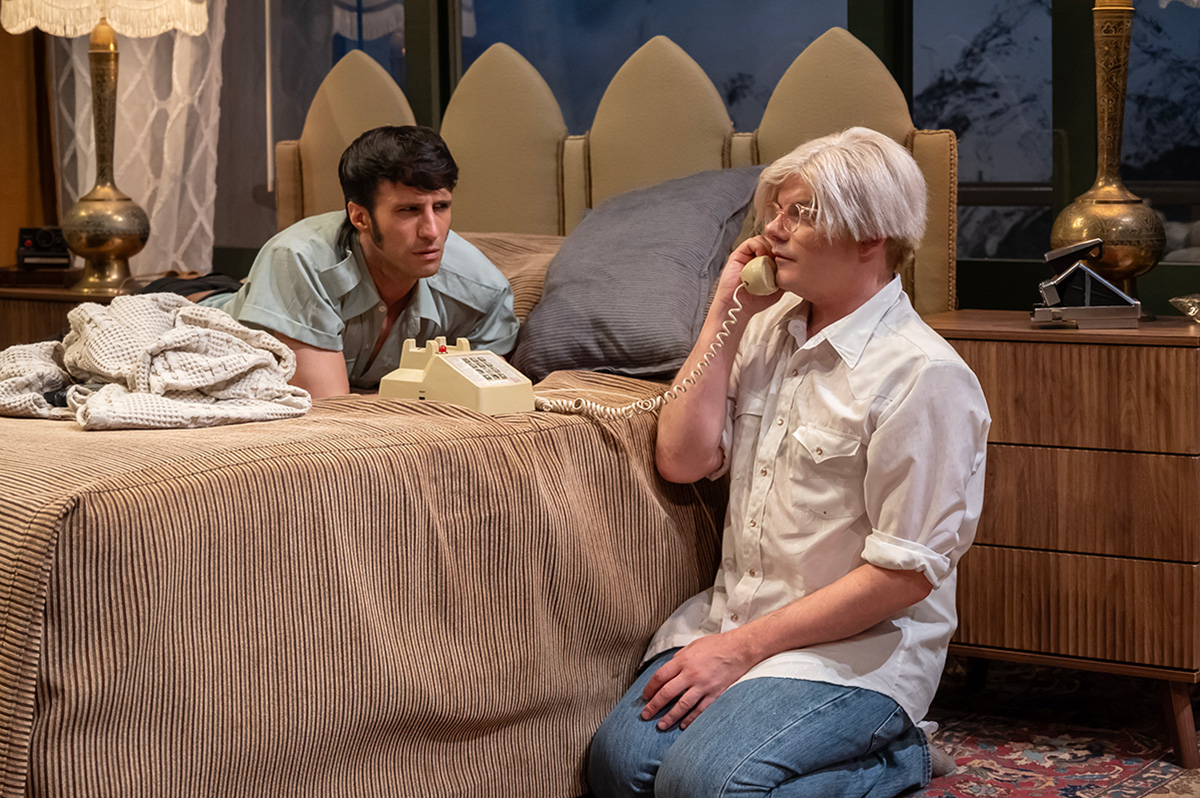
‘Andy Warhol in Iran’
Through July 6
Mosaic Theater Company at Atlas Performing Arts Center
1333 H St., N.E., WDC
$70
Mosaictheater.org
Behind the blasé veneer, Andy Warhol was more curious than people knew. Particularly when it came to money. He kept a close eye on how the ultra-rich lived, what fellow artists were being paid and who was paying them, and, of course, all the new and more saleable ways of making and selling art.
In playwright Brent Askari’s “Andy Warhol in Iran,” now playing at Mosaic Theater Company, Warhol (Alex Mills) is brought outside of his usual area of interest when he lands face to face with a young revolutionary. While Warhol could be artistically revolutionary, he didn’t connect with the idea of forgoing the pursuit of money and fame for the infinitely more difficult task of achieving social justice.
The 90-minute play is not fully factual, but rather inspired by Warhol’s real life 1976 trip to Tehran to make portraits of the royal Pahlavi family in the waning days of their reign, with a focus on Farah Diba, the Shah’s elegant wife and Iran’s last empress.
The action unfolds in a Tehran hotel suite boasting a glorious view of the snowcapped Alborz Mountains not far from Iran’s vibrant and bustling capital. It’s here, disguised as room service, that Farhad (played by Nathan Mohebbi) gains entrance to Warhol’s rooms, seeking to kidnap the pop art star to garner attention for the university students’ movement.
Warhol meets the armed intruder with a sort of wide-eyed wonderment, flummoxed why he has been selected for abduction. Warhol can’t understand why a young man like Farhad wouldn’t prefer to be paid a big ransom on the spot, or be cast as a star in one of the Warhol Factory flicks.
When Farhad replies it’s because Warhol is the most decadent artist in the world, Warhol mistakenly takes it for the ultimate compliment. After all, his biggest successes had been connected to celebrity and consumerism (think Campbell’s Soup Cans. 1962).
For Warhol, decadence is aspirational. He made portraits of financiers, movie stars, and jet setters. In fact, he’d been obsessed with the lives of the rich and famous since he was a small kid in Pittsburgh thumbing through Photoplay Magazine while bed bound with Saint Vitus Dance.
Accompanying Warhol to Tehran (unseen) are his business manager Fred Hughes, and Bob Colacello, editor of Interview magazine. Together, they make a merry trio of gay social climbers. These kinds of trips were a boon to the artist. Not only did they solidify a new strata of high society contacts, but were also superbly lucrative, thickly padding the painter’s pockets.
While in Iran, Warhol wanted only to view Farah’s vast world-class collection of jewels, sample the caviar on tap, and get his Polaroids. Then he’d fly first class back to New York and transfer the images to silk screen and sell the portraits to the Persian royals at a hefty price. He didn’t foresee any obstacles along the way.
Serge Seiden’s direction is spot on. He’s rendered a wonderfully even two-hander with a pair of terrifically cast actors. And Seiden plumbs the piece for humor mostly drawn from the absurdity of the situation without missing any of the serious bits.
As Warhol, out actor Mills is instantly recognizable as the eccentric artist. He’s wearing the button-down shirt, jeans, blazer, glasses, and, of course the famed shock of white hair wig (here a little more Karen than Andy). His portrayal is better than an imitation. He gives a bit of the fey and confused, but has also infuses him with a certain dynamism.
The energy works well with the intensity of Mohebbi’s would-be kidnapper Farhad. And while it isn’t a romance, it’s not impossible to think that Warhol might fall for a handsome male captor.
The connection between art and politics is almost always interesting; and though not a super deep dive into the era or the life of an artist, “Andy Warhol in Iran” is a compelling, charming, and sometimes funny glimpse into that intersection.
-

 U.S. Supreme Court4 days ago
U.S. Supreme Court4 days agoSupreme Court upholds ACA rule that makes PrEP, other preventative care free
-

 U.S. Supreme Court4 days ago
U.S. Supreme Court4 days agoSupreme Court rules parents must have option to opt children out of LGBTQ-specific lessons
-

 National5 days ago
National5 days agoEvan Wolfson on the 10-year legacy of marriage equality
-
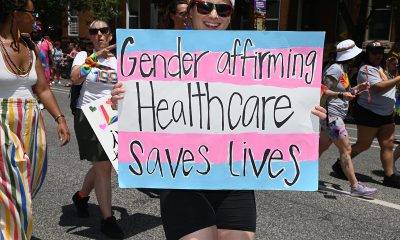
 Congress5 days ago
Congress5 days agoSenate parliamentarian orders removal of gender-affirming care ban from GOP reconciliation bill

